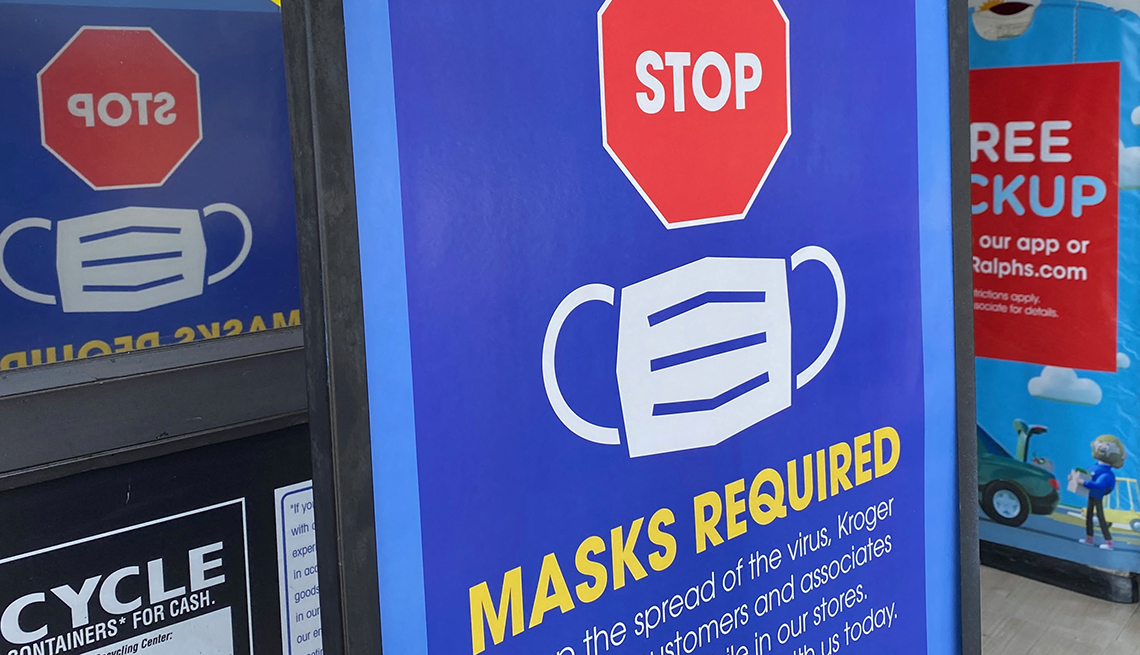Historical Context and Background: Nassau County Ban Masks

The implementation of mask mandates in Nassau County, New York, was a significant event in the county’s history, driven by the COVID-19 pandemic. This section will provide a timeline of mask mandates in Nassau County, discuss the political and social climate surrounding them, and explore the rationale behind their initial implementation.
Timeline of Mask Mandates, Nassau county ban masks
The timeline of mask mandates in Nassau County reflects the evolving understanding of the COVID-19 pandemic and its impact on public health.
- March 2020: Nassau County Executive Laura Curran issued an executive order recommending the use of face coverings in public settings, but it was not a mandate.
- April 2020: Governor Andrew Cuomo issued a statewide mask mandate, requiring face coverings in public settings. This mandate applied to Nassau County.
- May 2020: Nassau County implemented its own mask mandate, aligning with the statewide order.
- June 2020: Nassau County eased restrictions, allowing businesses to reopen with safety protocols, including mask-wearing.
- August 2020: Nassau County re-imposed a mask mandate in indoor public settings due to a surge in COVID-19 cases.
- January 2021: Nassau County expanded its mask mandate to include outdoor settings where social distancing was difficult to maintain.
- May 2021: Nassau County lifted its mask mandate for fully vaccinated individuals in most indoor settings, aligning with CDC guidelines.
- August 2021: Nassau County reinstated a mask mandate for all individuals, regardless of vaccination status, in indoor public settings due to the emergence of the Delta variant.
- February 2022: Nassau County lifted its mask mandate for all individuals in indoor public settings.
Political and Social Climate
The political and social climate surrounding mask mandates in Nassau County was often contentious. The issue divided communities and sparked debates about individual liberty, public health, and the role of government.
- Proponents of mask mandates argued that they were essential to protect public health and prevent the spread of COVID-19. They cited scientific evidence supporting the effectiveness of masks in reducing transmission.
- Opponents of mask mandates raised concerns about individual freedom and the government’s authority to mandate behavior. Some argued that masks were ineffective or even harmful.
Rationale for Initial Implementation
The initial implementation of mask mandates in Nassau County was based on the scientific understanding of COVID-19 transmission and the need to protect public health.
“Masks are a simple, effective way to reduce the spread of COVID-19,”
said Nassau County Executive Laura Curran at the time.
The rationale behind the initial implementation was:
- Scientific evidence: Studies showed that masks could significantly reduce the transmission of respiratory droplets, which carry the virus.
- Public health concerns: The rapid spread of COVID-19 posed a significant threat to public health, particularly among vulnerable populations.
- Hospital capacity: The surge in COVID-19 cases overwhelmed hospitals and healthcare systems, necessitating measures to reduce transmission and alleviate pressure on healthcare resources.
Public Health Considerations and Debate

The decision to mandate or ban masks has sparked significant debate, with public health considerations at the forefront. This section delves into the scientific evidence supporting and opposing the use of masks for preventing the spread of COVID-19, explores the effectiveness of masks in different settings, and examines the potential risks and benefits associated with mask-wearing.
Scientific Evidence Supporting and Opposing Mask Use
The scientific community has conducted numerous studies to assess the effectiveness of masks in preventing COVID-19 transmission.
- A meta-analysis published in the journal “The Lancet” in 2021 found that wearing masks significantly reduced the risk of COVID-19 infection, with an average risk reduction of 53%.
- Another study, published in the journal “Emerging Infectious Diseases” in 2020, found that surgical masks were effective in reducing the number of respiratory droplets expelled by infected individuals.
- However, some studies have shown that masks may not be as effective in preventing transmission in certain situations, such as outdoor settings with good ventilation.
- Critics of mask mandates argue that the scientific evidence is inconclusive and that masks may have negative consequences, such as reduced oxygen intake and increased anxiety.
Effectiveness of Masks in Different Settings
The effectiveness of masks in preventing COVID-19 transmission varies depending on the setting.
- Masks are generally more effective in indoor settings, where there is less ventilation and people are in closer proximity.
- In outdoor settings with good ventilation, masks may be less effective, especially if individuals are maintaining physical distancing.
- Masks are also considered more effective in crowded settings, such as public transportation or large gatherings, where the risk of transmission is higher.
Potential Risks and Benefits of Wearing Masks
Wearing masks can have both potential risks and benefits.
- Potential risks include discomfort, difficulty breathing, and psychological impact, such as feelings of anxiety or claustrophobia.
- Potential benefits include reduced risk of COVID-19 infection, protection for others, and the ability to participate in activities that might otherwise be restricted.
- The decision to wear a mask is a personal one that should be based on individual circumstances, including health conditions, personal preferences, and local regulations.
Nassau county ban masks – Nassau County’s mask ban is a hot topic, but you know what’s even hotter? A chair used as a bedside table! It’s a totally unique way to add personality to your room, and you can check out some cool ideas here.
Anyway, back to Nassau County – I guess we’ll see how the mask ban plays out.
Nassau County’s decision to ban masks has sparked a lot of debate, with some folks saying it’s a step towards normalcy while others feel it’s reckless. It’s interesting to compare this to Minnesota Governor minnesota tim walz , who has taken a more cautious approach.
Ultimately, the decision on whether or not to wear a mask is a personal one, and it’s important to respect the choices of others, even if you disagree with them.
